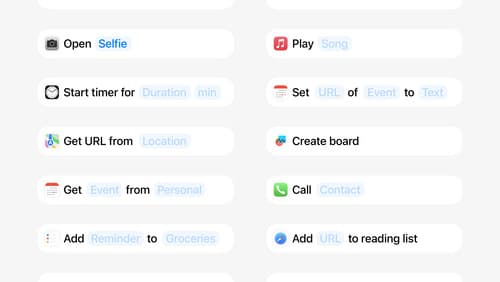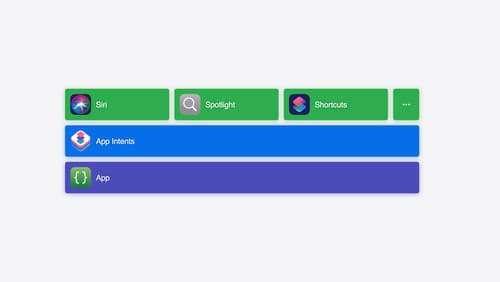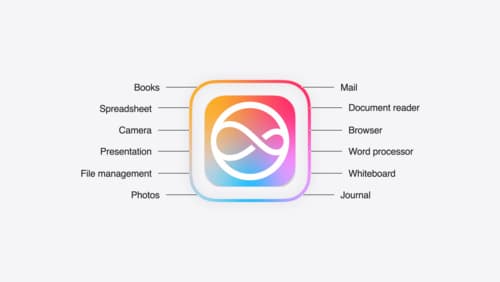App intent
Asked on 2024-07-29
4 searches
App Intents are a powerful way to extend the functionality of your app to system features like Siri, Spotlight, and Shortcuts. Here are some key points about App Intents from the WWDC sessions:
-
Definition and Structure:
- An App Intent consists of a summary of what it does, starting with the app followed by a verb, and includes the parameters that need to be filled out before the intent is run. (Design App Intents for system experiences)
- App Intents should be designed to be flexible and readable across many configurations and use cases. (Design App Intents for system experiences)
-
Guidance on Creating App Intents:
- Avoid creating several different intents for the same task. Instead, structure your app's functionality into a flexible intent where the parameters can be adjusted. (Design App Intents for system experiences)
- App Intents should not exclusively trigger specific UI elements. Instead, they should represent the underlying task people normally access using these UI elements. (Design App Intents for system experiences)
-
Behavior and Parameters:
- In iOS 18, opening your app as part of an App Intent is now a common behavior to show people that the intent has made a change in the app. (Design App Intents for system experiences)
- Parameter summaries are essential for people to understand what your App Intent does when exploring in the shortcuts drawer. (Design App Intents for system experiences)
-
Framework and Implementation:
- The App Intents framework handles the communication between your app and system features like Siri and Spotlight, allowing you to concentrate on implementing the actual behavior of your features. (Bring your app’s core features to users with App Intents)
- Once you've implemented support for one system feature, the same work can be useful across a range of system features because they are all based on App Intents. (Bring your app’s core features to users with App Intents)
-
Examples and Code:
- Creating an App Intent for a specific task, such as creating photo albums, can be done by conforming to a schema, which simplifies the code and makes it easier to define. (Bring your app to Siri)
Relevant Sessions
- Design App Intents for system experiences
- Bring your app’s core features to users with App Intents
- Bring your app to Siri
For more detailed guidance, you can refer to the specific chapters in the sessions mentioned above.

Design App Intents for system experiences
App Intents power system experiences in controls, Spotlight, Siri, and more. Find out how to identify the functionality that’s best for App Intents, and how to use parameters to make these intents flexible. Learn how to use App Intents to allow people to take action outside your app, and see examples of when to navigate into your app to show contextual information.

Bring your app’s core features to users with App Intents
Learn the principles of the App Intents framework, like intents, entities, and queries, and how you can harness them to expose your app’s most important functionality right where people need it most. Find out how to build deep integration between your app and the many system features built on top of App Intents, including Siri, controls and widgets, Apple Pencil, Shortcuts, the Action button, and more. Get tips on how to build your App Intents integrations efficiently to create the best experiences in every surface while still sharing code and core functionality.

Bring your app to Siri
Learn how to use App Intents to expose your app’s functionality to Siri. Understand which intents are already available for your use, and how to create custom intents to integrate actions from your app into the system. We’ll also cover what metadata to provide, making your entities searchable via Spotlight, annotating onscreen references, and much more.
